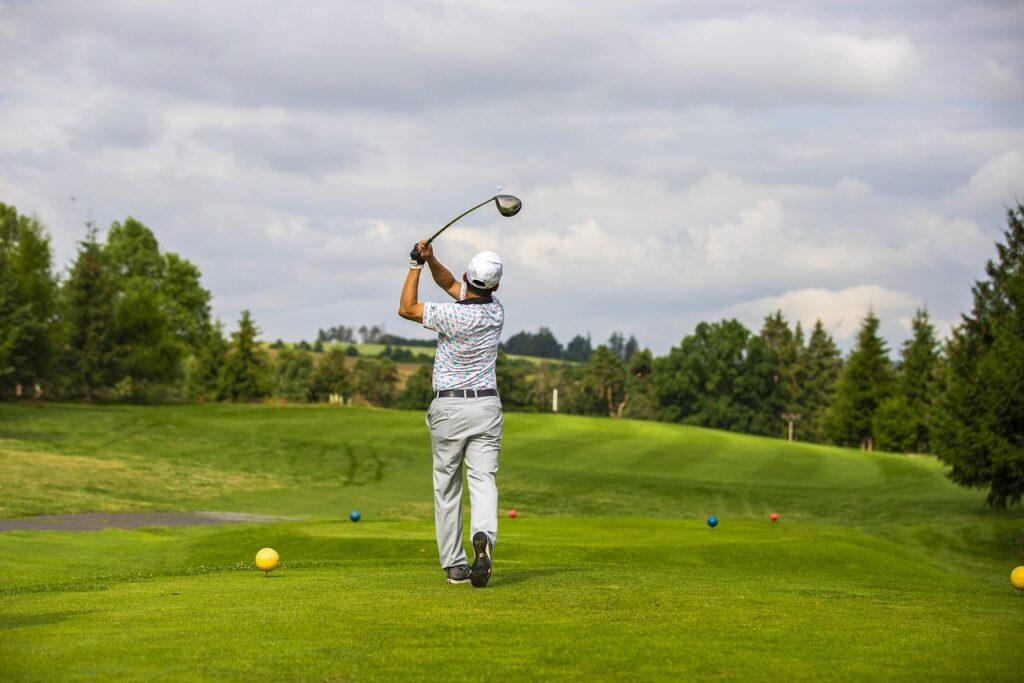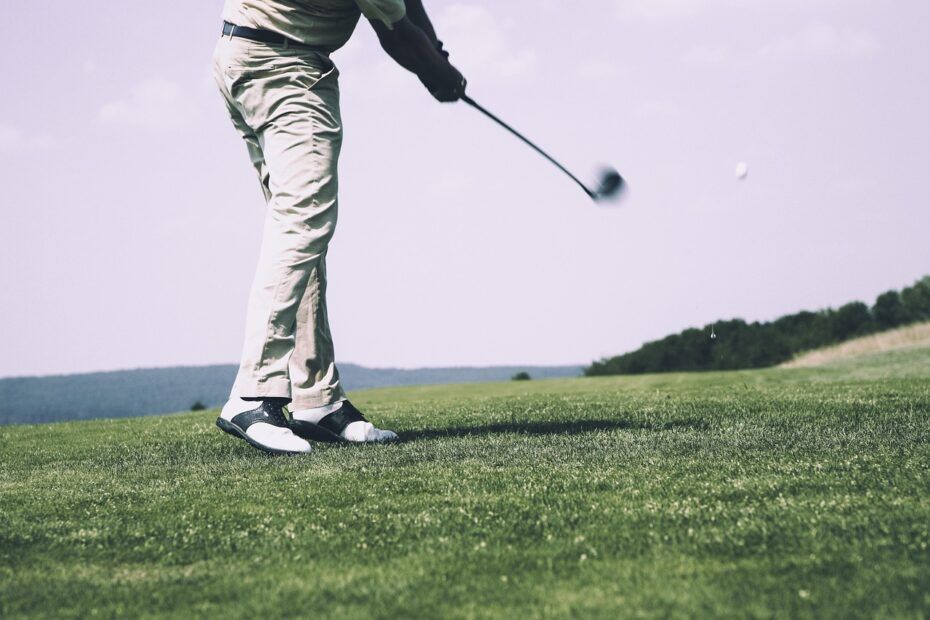Golf’s a fantastic sport for seniors, offering a great way to stay active, socialize, and enjoy the outdoors.
That said, the older we get, the more susceptible to injuries we become.
One reason for this is that as we age, our muscles and joints become less flexible, making them more likely to get hurt during an activity like golf.
I know, this is a bummer, but fortunately, exercise can make a big difference.
Incorporating a proper stretching routine before and after playing can help seniors maintain mobility, reduce stiffness, and reduce the chances of injury on the golf course.
In this guide, we’ll go over some of the best golf stretches seniors can do to improve their game and reduce their chances of injury.
Why Stretching is Important for Golfers (of all ages)
Stretching is especially important for senior golfers, but in reality, it’s important for golfers of all ages and for several reasons, including:
Injury Prevention
Stretching’s important for golfers of all ages for several reasons, but one of the main benefits is injury prevention.
Golfing’s a dynamic sport that involves pretty much the whole body and having tight muscles increases your chances of something going wrong.
A regular stretching routine before and after golfing helps reduce these risks by keeping muscles loose and prepared for movement.
Improved Flexibility
Improved flexibility is another key benefit, as it allows golfers to achieve a smoother and more efficient swing.
This can help reduce strain on the body, but it can also improve overall performance.
A well-executed golf swing relies on the full range of motion in the shoulders, back, and hips, which stretching can help maintain over time.
Better Accuracy
Stretching also enhances performance by promoting better club control and accuracy.
A flexible body allows for a wider backswing and greater follow-through, leading to more consistent shots.
Improved Recovery
Lastly, stretching supports muscle recovery, helping to alleviate post-game soreness and stiffness.
Gentle stretching after a round of golf encourages blood flow to the muscles, which aids in faster recovery and reduces discomfort the following day.
Which in turn, can help golfers fit more rounds in than otherwise possible.
Best Golf Stretches for Seniors
To maximize flexibility and avoid injury, seniors should focus on dynamic stretches before playing and static stretches after a round.
Now this rule isn’t written in stone anywhere, but it’s generally true for most individuals.
FYI, dynamic stretching involves repetitively moving a body part through a larger range of motion, while static stretching involves holding a certain position for an extended period of time.
(Check out this article for more info on dynamic vs static stretches).
Since dynamic stretches involve movement, they work well as part of a warm-up… but again, this rule isn’t written in stone.
Dynamic Warm-Up Stretches
These exercises will help get the blood flowing and get your muscles ready for a round of golf.
Just keep in mind, the goal here is to get warmed up, not worn out – these exercises should only take a few minutes total to complete.
Aim for performing each stretch for 30 – 45 seconds.
1. Trunk Rotations
This is a great way to loosen up your back and get your body ready for the rotational aspect of teeing off.
- Stand with feet shoulder-width apart.
- Clasp your hands together in front of your chest or hold a golf club out front.
- Slowly rotate your torso to one side, hold for 1-2 seconds, then rotate to the other side.
- Repeat 5 – 10 times per side to improve flexibility in the spine.
2. Leg Swings
This exercise warms up the hips and hamstrings, important muscle groups for a proper golf swing.
- Stand next to something you can place one hand on for balance (golf cart, bench, tree, etc).
- While keeping one leg straight, swing it forward as far as you comfortably can.
- Instead of holding, allow that leg to swing back behind you again as far as you comfortably can.
- Alternate between swinging forward and backward.
- Repeat 10-15x and then switch to the other leg.
FYI, you can also do a side-side leg swing to help loosen up your hip adductors/abductors.
If you’re still not sure what this exercise looks like, check out this video demonstration.
3. Hip Hinges
This exercise will help warm up your lower back, helping to prevent any unwanted pulled muscles during your game.
- Stand with feet shoulder-width apart, knees bent just a little.
- Tuck your belly button in slightly to engage your core.
- Slowly extend your butt back, while keeping your back straight (head/shoulders go forward).
- Hold for a second, and then return to the starting position.
- Repeat 5-10x.
This is another exercise that may be hard to visualize – here’s a good video demonstration.
4. Arm Circles
Arm circles are a classic warm up exercise that will help get your shoulders warm and ready to play.
- Stand with your feet shoulder-width apart, arms extended out to each side (shoulder-height).
- Slowly turn your hands in a circle.
- Repeat in same direction for 20 seconds and then change directions and repeat for another 20 seconds.
Feel free to play with the size of your arm circles – you can start with small circles and work up to larger ones and vice-versa.

Static Cool-Down Stretches for After Golfing
As mentioned, dynamic stretches work great for warming-up before a round of golf, but traditional, static stretches work nicely to cool down after the game.
These stretches will be held a little longer and won’t involve as much movement.
1. Trunk Side Bend (QL stretch)
This move will stretch out your quadratus lumborum, a large muscle on the side of your low back, but it’ll also stretch out your lats as well.
Overall, a great stretch to help prevent/treat low back pain.
- Stand with your feet shoulder-width apart.
- Elevate your right hand straight up toward the sky, keeping your elbow straight.
- Side-bend to the left side as you reach your right hand out to the left.
- Hold for 20 seconds and then return to the starting position. Repeat to the other side.
- Repeat 3-4x for each side.
2. Hip Flexor Stretch
Keeping the hip flexors happy is a good way to prevent low back pain – and most of us have tight hip flexors to begin with.
- Stand with one foot forward and the other foot behind you.
- Bend your front knee while keeping your back leg straight and push your hips forward.
- Hold for 20 seconds, then switch legs.
- Repeat 3-4x for each leg.
3. Hamstring Stretch
Tight hamstrings are another common cause of back/hip pain, so keeping them loose and comfortable can go a long way in remaining pain free.
There are a ton of ways to stretch your hamstrings, but this one is comfortable for most seniors.
- Place one foot on a low bench or step.
- Keep your leg straight and gently lean forward, feeling the stretch in the back of your thigh.
- Hold for 15-20 seconds and then switch to the other side.
- Repeat 3-4x for each leg.
4. Wrist & Forearm Stretch
If you’re prone to golfer’s elbow (medial epicondylitis), you’ll want to spend some time stretching your forearms before and after playing.
Massage can also go a long way to relieving unwanted elbow pain.
- Extend one arm in front of you with your palm facing up.
- Use your other hand to gently pull back on your fingers.
- Hold for 10-15 seconds, then switch hands.
- Repeat 3-4x for each arm.
5. Standing Quad Stretch
If you ever experience knee pain during/after playing golf, tight quadriceps could be the culprit.
Stretching them regularly can help treat/prevent this pain.
- Stand tall and grab one ankle with your hand, pulling it towards your glutes (feel free to hold on for support with other hand).
- Hold for 15-20 seconds, then switch legs.
- Repeat 3-4x for each leg.
6. Seated Lower Back Stretch
Finally, this is a nice stretch for the muscles around your low back (lumbar paraspinals).
These muscles may be tired and achy after a long day of golf, so it’s a good idea to stretch ’em out before calling it a day.
- Sit in a chair with feet flat on the ground.
- Slowly bend forward, reaching toward your toes.
- Hold for 10 – 20 seconds, then sit back up.
- Repeat 3-5x.
Tips for Safe Stretching
Here are a few additional tips to help everyone stay safe while exercising:
- Always warm up before stretching with light movements like walking.
- Avoid bouncing while stretching; hold each stretch gently.
- Breathe deeply and relax your muscles.
- Never force a stretch to the point of pain.
- Stretch consistently to maintain flexibility over time.
Final Thoughts
Ok, I think that about does it.
I know, stretching isn’t fun, but it really can make a difference in a senior’s golf game.
Not only can it help prevent injuries, but it can also help improve swing efficiency and maybe even improve your score.
Just remember that pain isn’t a normal part of stretching, so if any exercise hurts, please discontinue and seek guidance from your family doctor or local physical therapist.
Otherwise, feel free to leave any comments or questions below and I’ll get back to you shortly.



